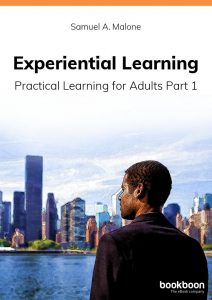From problem-based learning to coaching and mentoring: An overview of experiential learning models

 Experiential learning is learning acquired through action and practice. We learn by interacting with others engaged in meaningful tasks. Here’s an overview of the main experiential learning models.
Experiential learning is learning acquired through action and practice. We learn by interacting with others engaged in meaningful tasks. Here’s an overview of the main experiential learning models.
Role-play is a type of simulation within the context of a carefully initiated scenario. Acting out what you are trying to learn can make information more meaningful and memorable. Role-players may operate to a script or may act to general guidelines and ad-lib. The aim is to give people a taste of the real-life roles and situations they are likely to get involved in.
Simulations are learning activities designed to replicate real-world situations. They are artificial representations of real problems. Simulations provide opportunities for trial-anderror solutions in a risk free environment. Any mistakes that arise are a great source for learning and insight into the consequences of their actions and the need to ‘get it right.’
Case studies are a form of problem-based learning. They are scenarios based on actual problems experienced by a company, industry or project over a set period of time. They are used as a vehicle for discussion, analysis and solution in management, marketing and business training. The lessons learned are likely to be useful for future situations.
Action learning is learning from work-based experience through group discussion and reflection, trial and error, and personal discovery. Its main precept is learning from one another in the workplace.
Discovery learning places the responsibility for learning on the learner. Trainees are given just enough information to discover accurately for themselves how to perform. The learning facilitator must be discreet enough to know when help is required and when they should withdraw discretely into the background.
Problem-based Learning is a system of learning where learners in a group formulate their own questions, determine the solution process, reflect on the quality of the information they research, and present their findings to the group. It is a type of collaborative experiential learning. It helps learners to understand their own learning style and develop critical thinking and problem solving skills in a group situation. The trainer acts as a facilitator rather than as an instructor.
In project based learning learners work in groups to tackle challenging problems that are real, and often need an interdisciplinary team approach to solve them.
Coaching is one-to-one training to improve managerial or employee performance. Unlike traditional training it is just-in-time rather than just-in-case. It is results-orientated learning by doing, and targets the precise training and development needs of the coachee. The coach operates as a learning facilitator rather than a director of training. There are four basic types of coaching, namely, sport, executive, peer and personal (life).
The benefits of coaching are numerous and include performance improvement and better problem solving. Coaching may be used to help fill the succession needs of a company, provide leadership development for senior managers and meet specific skill needs of employees and managers.
Coaching may take a few weeks, a few months or more than a year. It should be driven by outcomes rather than by time. Coaching can be used to develop managers, employees, entrepreneurs, self-employed and professional people. Coaches can be sourced from inside or outside the organisation. Each type of coaching has its own unique advantages and disadvantages. Peer coaching may occur all the time or on a just-in-time basis.
Objectives, action plans, schedules and consultations should support the process of coaching. The fact finding stage may be undertaken with 360 degree feedback, psychological testing, organisational climate surveys and learning style questionnaires. This will help the coach get a handle on the situation.
Coaching is now a popular training and development approach in many public and private organisations. Large multinational companies are particularly attracted to the coaching idea and use it to grow and develop their managers.
The ideal coach should have good communication, interpersonal relationship, facilitation and people development skills. They should have the trust of the coachee and thus retain confidentiality at all times. They should demonstrate a high sense of professional and personal ethics and lead by example.
The GROW model is used extensively in coaching. GROW is an acronym which stands for Goal, Reality, Obstacles/Options and Way forward. It examines four sequential steps using open-ended, non-judgemental questions and helps coachees have learning insights. The coachee identifies problems and generates ideas for the solution of those problems.
Mentors advise, guide, nudge, counsel, coach and support learners in their career aspirations. They adopt a facilitating style rather than a directive style when dealing with their mentees. Mentees should be encouraged to become self-sufficient, self-reliant and self-directed learners, and take responsibility for their own learning.
A good mentoring programme can increase the productivity and efficiency of staff and reduce employee turnover. It can improve job satisfaction, morale and the image of the company by being perceived as a more attractive place to work for. Consequently, it should be able to recruit better quality employees.
Mentoring can be used in induction, management development, and the development of entrepreneurs. The support for entrepreneurs, including access to established business leaders for advice, helps them refine their business plans and get access to the resources they need. Mentoring can be formal or informal. Formal schemes are planned, systematic arrangements, whereas informal schemes are freewheeling and evolve in response to ongoing needs. Mentors can be recruited from inside or outside the company.
Many small, medium and large companies have accepted mentoring as an appropriate way to train and develop staff. Mentors should be carefully selected and groomed for their role. Ideally mentors and mentees should be matched having regard to their personalities, attitudes, background, experience, and learning styles. Mentors and mentees should undergo appropriate induction training to prepare them for their respective and important roles.
The mentoring life cycle can be likened to the product life cycle with its stages of introduction, growth, maturity and decline. In other words the relationship begins, grows and matures until it comes to an end on the successful completion of the mentoring process having achieved the desired outcomes.
Would you like to delve deeper into the world of experiential learning? Download our eBook by Samuel A. Malon.




